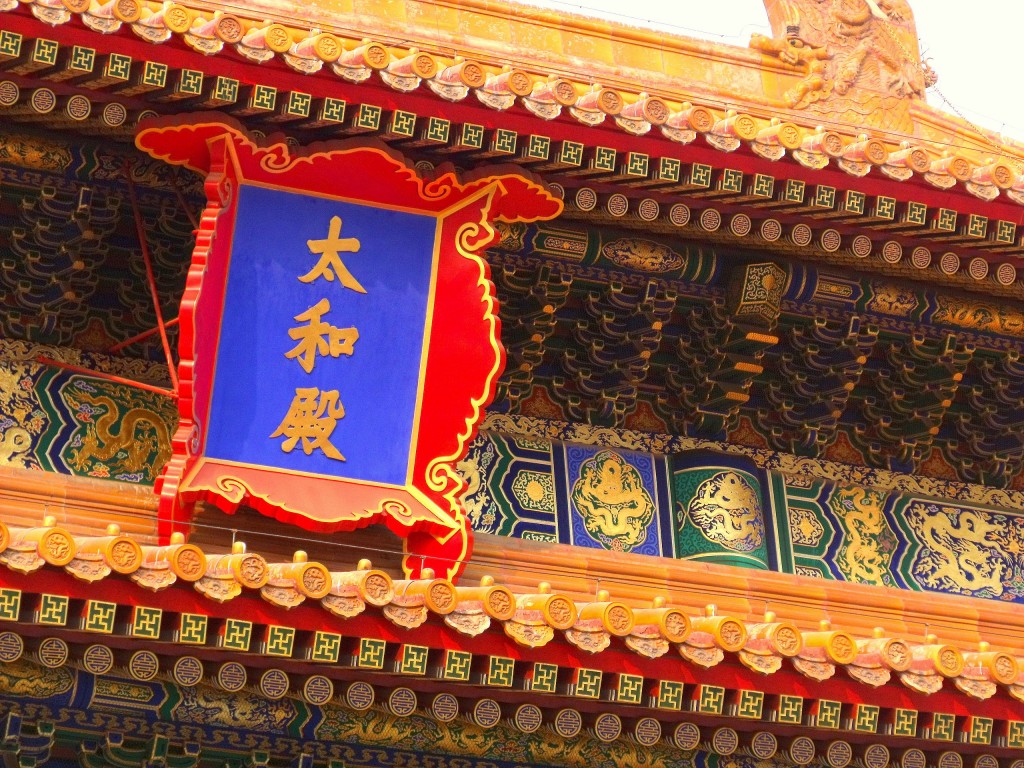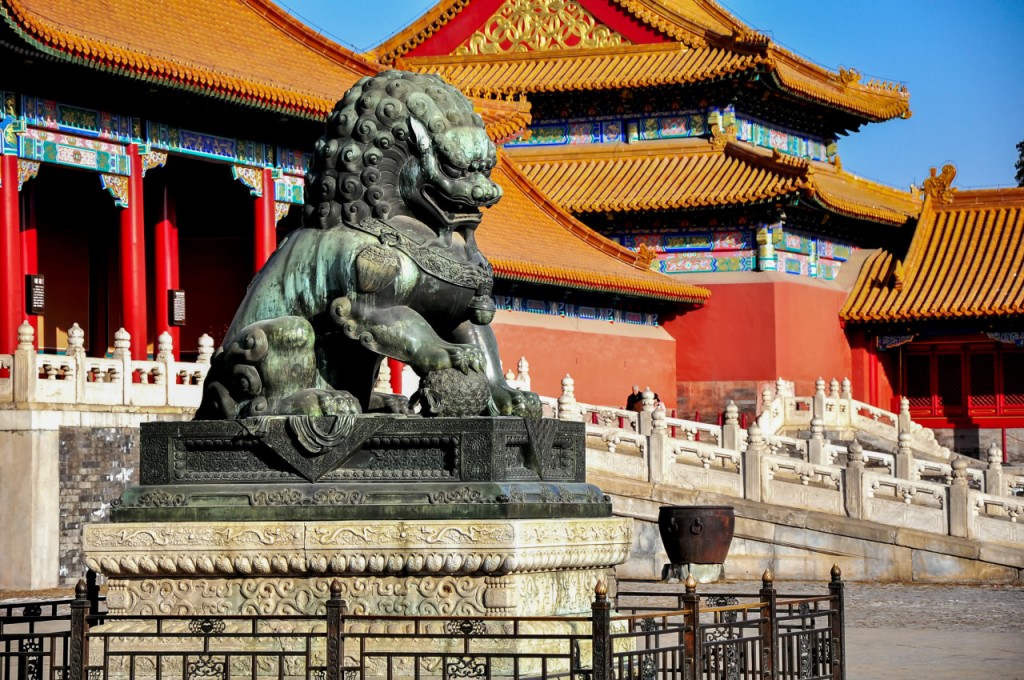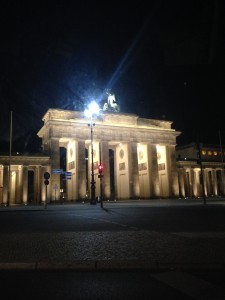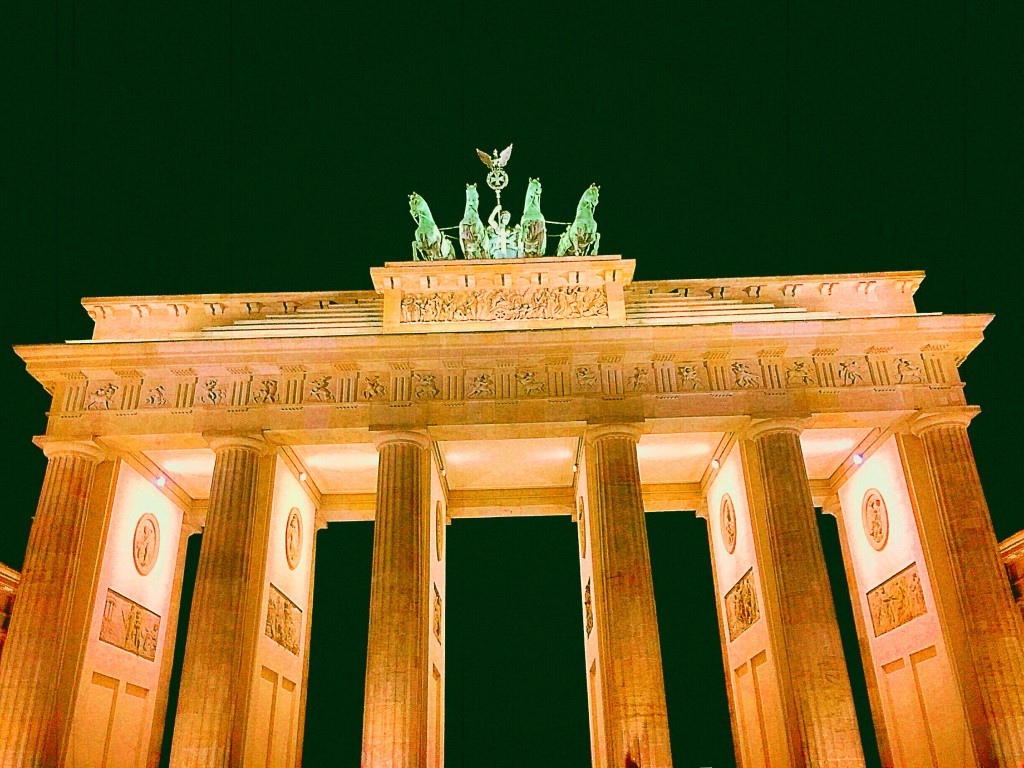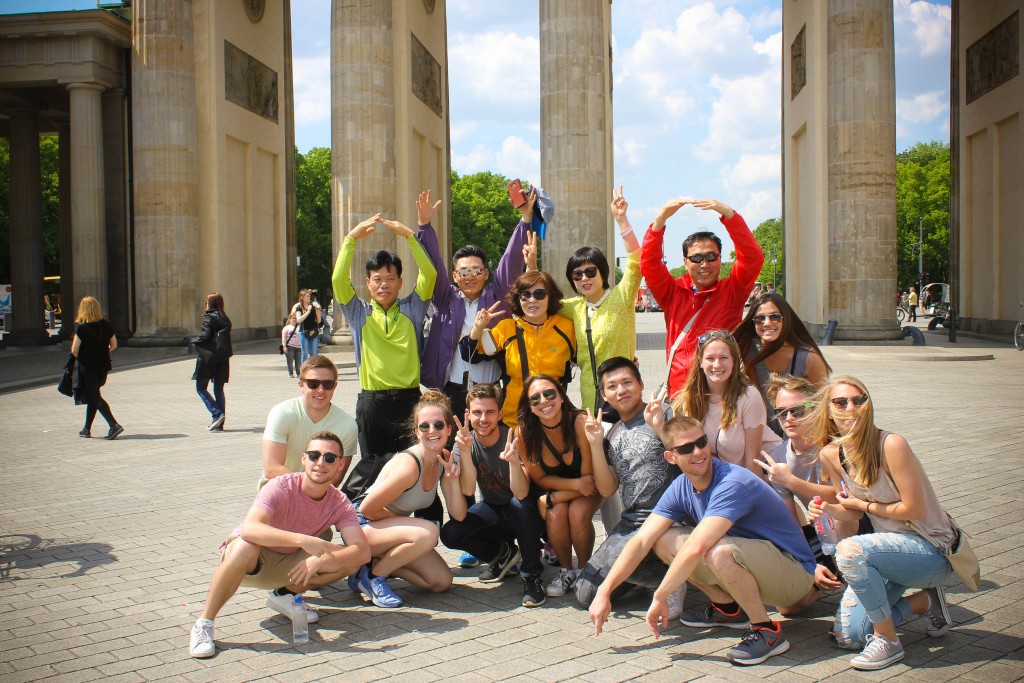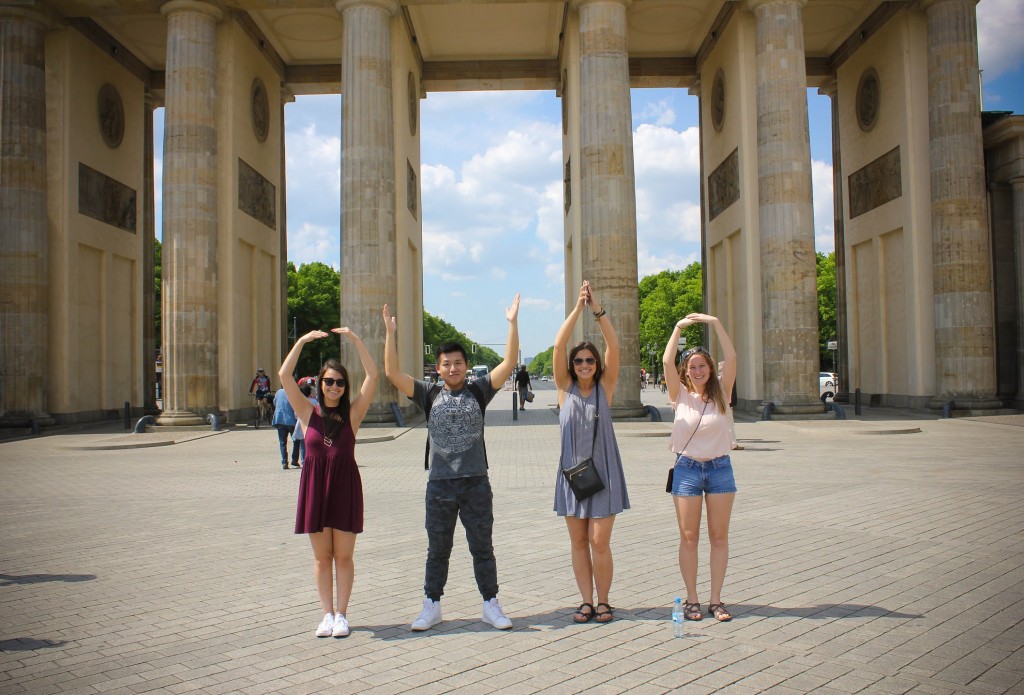<Evolving Reflections>
Originally we chose this topic, the Brandenburg Gate, since it was one of the few places that we had both been in the four days before our first blog was due. We traveled together, all 15 of us, to this monument that we did not know much about, except for the fact that it is famous and that you have to see it when you travel to Berlin. We were shocked at its structure and beauty and soon found ourselves taking an endless amount of pictures trying to capture its everlasting beauty. In the three short days that we had arrived in Berlin we had already fallen in love with the city because of the Brandenburg Gate. The Gate is a great symbol of the beauty that can be found all over Berlin and Germany and it helps prove that strength an d peace are timeless. The history that makes Berlin what it is today can be studied through the Brandenburg Gate since it has withstood two wars, the Berlin Wall, and decomposition often found in nature. One of the main parts of the Gate that we really enjoy is the Quadriga which is a sign of both strength and peace that the Germans are trying to achieve. We believe that the Germans are doing a great job of trying to live this lesson since they are always accepting refugees in need and have a strong presence in today’s world with foreign politics.
By completing this assignment we have learned a lot about the Brandenburg Gate. When the gate was designed and built it was a sign of peace and strength, something that we feel has continued to be a sign throughout history. The gate was built by one of Germany’s king, King Kaiser Wilhelms, in the year 1791 once they defeated the Greeks. We thought that this fact was interesting because it means that the gate was built for the people of Berlin, as a entrance to the city. The Brandenburg Gate was created for the people and it has continued to be a symbol for the people as time went on, which is why we believe many people flocked to the gate when the Berlin Wall was finally coming down. We also thought that the fact that Brandenburg Gate was something that both the East and West came together to fix. This is a beautiful movement of peace between the two different sides of Berlin, which is what the Gate is a symbol of. The Brandenburg gate is a historic monument in the populous city of Berlin and will continue to be one for the rest of time.
Overall we really enjoyed learning about the Brandenburg Gate and learning about many aspects of it. It is really interesting to piece together the history of a national figure for Germany and to learn more about the culture of Berlin and Germany along the way. We are extremely thankful for this opportunity to learn about another culture and history that is still evolving today, we will never forget the experience that we have had on this trip and the memories that were made. Over the course of our time in Berlin and this assignment, we have developed a new found respect for the Brandenburg Gate and the people of Germany who made this monument what it is today.
<Berlin, Germany VS. Beijing, China: Similarities, differences, and interconnections through the lens of architectures>
Brandenburg Gate is an 18th-century neoclassical monument in Berlin, which has witnessed all those ups and downs within Berlin and German history; Brandenburg Gate is undoubtedly the symbol of Berlin and Germany. The Forbidden City in Beijing is the very symbol of China, which has seen rise and fall within ancient Chinese empires and also the contemporary China.
Chinese: The Forbidden City
The Forbidden City was the Chinese imperial palace from which twenty-four emperors of the Ming and Qing Dynasties ruled China for over 500 years —— from 1420 to 1911. The Ming Emperor Yong Le, who usurped the throne from his nephew and made Beijing the capital, ordered its construction, on which approximately 10,000 artists and a million workmen toiled for 14 years from 1406 to 1420. At present, the Palace is an elaborate museum that presents the largest and most complete ensemble of traditional architecture complex and more than 900,000 pieces of court treasures in all dynasties in China. Located in the center of Beijing, the entire palace area, rectangular in shape and 72 hectares in size, is surrounded by walls ten meters high and a moat 52 meters wide. At each corner of the wall stands a watchtower with a double-eave roof covered with yellow glazed tiles.
Through observing the major landmark of Germany and China, it is not hard to find out lots of similarities, differences, and interconnections. The biggest difference is that Brandenburg Gate features a western mythology figure riding horses on the top while in Chinese culture, people figures are barely used on architectures; instead, we use lots of dragons and phoenixes to symbolize strength and power. What is more, Chinese focus a lot on the number of decorations, as numbers in Chinese usually mean lots of things and also Chinese is a high-context language. For example, nine sets of decorations in a row are used a lot, which means long life. Also, based on my observation on the Forbidden City and Brandenburg Gate, Forbidden City is much more colorful and both red and yellow colors are very dominant while there is not many colors on the Gate, which proves that German loves using simple pure colors and the grand structure to symbolize power and strength while Chinese focus more on the content and colors.
The first biggest similarity that I have found out is that both of those monuments have been used for many different meanings through different times. For example, Brandenburg Gate was built up for the victory and unity of Prussia. Later on, it stood for the separation and division of Germany. In fact, the meaning behind Forbidden City has gone through the same shifts. The reason that the name is “Forbidden City” is that during Ming Dynasty no one but the royal can enter this palace because this palace was served as the home of emperors and their households as well as the ceremonial and political center of Chinese government. In other words, this palace was the symbol of division of hierarchy and separation of Chinese people, just as the Brandenburg Gate was served as the separation for the West and East Berlin and also Nazi and anti-Nazi party back then. However nowadays, Brandenburg Gate is the symbol of strength and peace while the Forbidden City is entirely open for every one, carrying out the sense of peace and reunion in Chinese nation. I am really amazed that sometimes, architectures can actually carry this many meanings and divide the people into separated parties and communities, which is the biggest similarity that I have discovered between German and Chinese culture.
In terms of the interconnections, I strongly believe that the same architecture can have different meanings in different times for different people while witnessing and carrying on the significant culture and history of that nation, and this interconnection will never change even if in different country. Especially, during the contemporary times, Brandenburg Gate and Forbidden City have built up the bridge to connect individuals from all over the world together who will be able to appreciate the history and look forward to the future. Now the Forbidden City and Brandenburg Gate are no longer forbidding, but inviting and welcoming. A visit to those sites will enrich the visitors’ knowledge of history, economy, politics, arts as well as architectures in Germany and China.
Written by Tower Zhou and Brittany Hegeman



